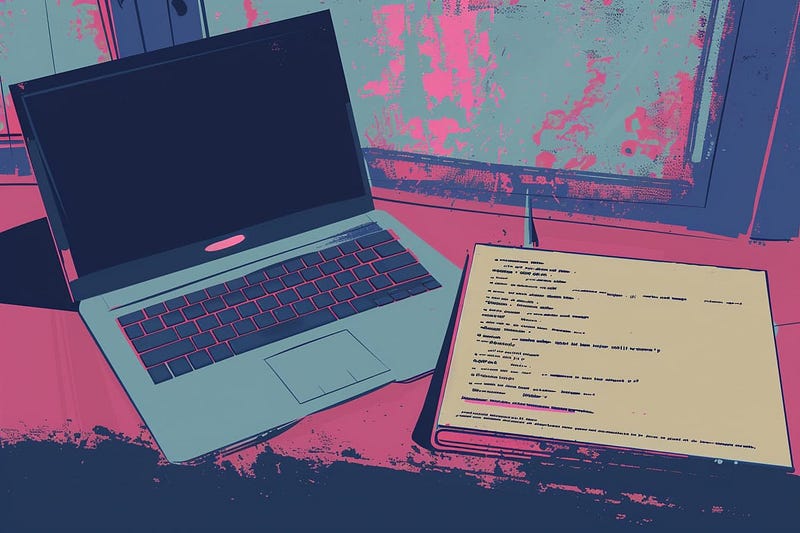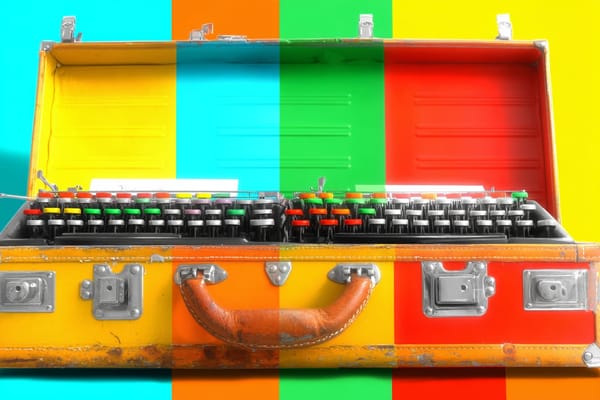What Makes a Freelance Business Sustainable?
Escape the hustle and grind of freelancing.

Feast or famine. Bad projects. Overwork, too many hours, no balance. Inability to say no.
Sound familiar? As freelancers, we know what makes a freelance business unsustainable. You feel like you're constantly working and catering to clients' whims (which is not sustainable for any business model).
It's the opposite of what you signed up for, which was freedom from the confines of a 9-5 job. Freedom from a boss telling you what to do. Freedom to choose the type of work you want. However, many freelancers feel trapped in unsustainable, low-paying work.
What does the opposite of that look like? What makes a freelance business not only stable, but also sustainable?
Sometimes, we're limited by not knowing what's possible. A lot of freelancers have been struggling, especially with the rise of AI. However, some freelancers (myself included) have emerged with sustainable businesses. There are a few things you can do to build a solid foundation for your own business.
Charging a sustainable rate
A big barrier to freelance sustainability is low pay. You earn so little per project that you have to do a ton of work to meet your income needs.
When I first started freelance writing I was paid an abysmal rate. I had no business strategy because I was working for an agency, and no idea that I could build a business on my own. I did the mental math and knew that I'd have to crank out thousands of words per day to earn the bare minimum to meet my family's needs.
At the time, I had no idea that freelancers charged more — substantially more — than what I was earning. My first freelancing job (for an agency) paid $27 per 1,000 words. Now, I charge clients up to $1,250 for 1,000 words. I only knew what was possible because other freelancers shared their rates with me. I knew that $1/word was possible with the right clients.
Many freelancers take a "throw spaghetti at the wall to see what sticks" approach to pricing. To build a sustainable freelance business, you need to understand what other freelancers are charging. You may be charging a rate that feels good to you, but other people are charging a lot more. They may have the same skills and expertise as you, but are targeting different clients — those that are willing to pay. I write for venture capital-backed tech companies with large budgets.
And if you feel like you're in a good place with your pricing, pay it forward by sharing it with other freelancers. I'm in a few freelancer communities and talk with other freelancers all the time. I respond to DMs when I'm asked directly about my rates. I also talk about the evolution, because I didn't go directly from 2.7 cents per word to $1.25 per word overnight. It was an evolution of my business over a period of time.
Transparency is how we know what we're worth to clients and what they're willing to pay.
Predictable income
After you reach a point when you feel like you're charging a good rate, the next step in business sustainability is to have a predictable income. You may charge a great rate, but if your income is still up and down, your business won't feel sustainable. You'll be stressed during the low-earning months.
Predictable income happens when you have a steady stream of clients interested in you and your work (which I'll talk about in the next section). But predictable income isn't the same as consistent income. You may have a predictable amount of income each month — enough to cover your needs — but that doesn't mean it's consistent from month to month. I still have variations in my monthly income; no two months are the same. And that's one of the biggest differences between freelancing and a full-time job, since you need to plan for those variations (and even calculate what-if scenarios)
Even though you may never have a fully consistent income, you can create predictable income by saving during high months and pulling from your savings in low months.
This is pretty easy to do:
- Open a new savings account
- Figure out your desired monthly income (after expenses)
- When you earn more than your monthly target, put the extra in savings
- When you earn less than your monthly target, pull from your savings
I say "target" monthly income rather than "minimum" monthly income. To a minimum is the bare minimum of what you need to pay your bills, leaving you with nothing extra (and probably still stressed). A target monthly income is a comfortable amount, similar to how you might feel if you were working a 9-5 job.

A healthy pipeline of new clients
The best way to build predictable revenue is to break the "feast or famine" cycle. Too often, freelancers only look for clients when they need a new client (like after losing a client). Marketing always has a delayed effect: if you announce today that you're taking on new clients, it could take weeks (or months) before you can replace the client you lost.
Sometimes, freelancers get busy and put marketing on the back burner. That's the opposite of what you should do, because it can have a negative impact on your business. If you consistently market yourself — even when you don't need new clients — you can create more interest. When you need more work, potential clients will know who you are and what you do. They don't need to familiarize themselves with you, which shortens the cycle from a discovery call to a signed contract.
Self-promotion is almost a necessity for a sustainable freelance business. I say "almost" because I know some freelancers who have built businesses entirely on referrals or multi-year contracts. But otherwise, it's unlikely clients will find you unless you show up online. Cold pitching has limited effectiveness because people's inboxes are so noisy. And many job posts for freelancers receive hundreds of applicants, making it hard to stand out.
I hate traditional self-promotion, which can feel cringe-y on platforms like LinkedIn. Instead, I talk more generally about content marketing-adjacent topics, mixed in with topics I care about. I also talk about how I stay organized as a freelancer, so potential clients understand what it's like to work with me.
I also schedule posts, sometimes weeks in advance. That way, if I'm busy, I don't have to worry that my marketing engine has slowed.
Unique product or service offerings
There are a lot of freelancers in the world, so you need to give potential clients a reason to choose you over other freelancers.
My area of expertise is pretty niche (financial technology), so that sets me apart from generalists. Building expertise is certainly one route to take, and can usually command higher rates. I've done a lot of work to position myself as a financial writer and demonstrate my skills through my portfolio.

Even though my expertise is unique, my services are very narrow: I only offer long-form content (blog posts, eBooks, thought leadership). I think copywriting for landing pages or emails is a very different skillset. If you are able to offer a variety of services, that's also attractive to some clients. They'd rather hire a single freelancer than hire multiple freelancers for different types of work.
You can also offer different contract structures or innovative business models. Almost all of my work is ad hoc, or "as requested." Even though many freelancers chase retainers and their promise of predictable income, I rarely do them.
Clients can hire me without a huge commitment, and that's really appealing. Since I'm working with marketing departments, they can often face abrupt budget changes or even shift their strategy and publishing cadence. Potential clients can easily say "yes" after meeting with me because they don't need to get the specific budget for a retainer approved. I can increase or decrease my output for a specific client as they need it. The trade-off is that I can't always turn work around quickly, because I schedule clients on a first-come, first-serve basis.
This approach has kept my client roster consistently full. If I lose a client, it's usually a small portion of my income, rather than the potential loss of a large retainer.
Diversified income streams
I hate to say that you should have a side hustle for your freelance business, because that feels counterintuitive (especially since many freelance businesses start as a side hustle!). Why add one more thing when you're already self-employed?
But diversified income streams can help during the lean months. For example, I create resources on Gumroad and I publish on Medium. Both of these earn money, which has increased steadily over time. If you lose a client, diversified income can lessen the impact or lessen the amount you need to pull from your savings account. You won't have to worry as much about fluctuating income from your primary source.
Another way to build a sustainable freelance business is to find ways to rely less on your time to earn money. Everyone has a maximum capacity, and if you're always trading your time for money, eventually you'll max out. Even if you start charging more, you may hit a ceiling with how much clients are willing to pay.
Unique product or service offerings might also get you a more diversified income. A few of my freelance friends offer coaching services to other freelancers, in addition to their primary client work.
More freedom with sustainable business practices
A sustainable business allows you to feel good about the work you do. Growth and freedom don't necessarily mean more money. You might have more free time, or you can decline projects that aren't a good fit for you. You might be able to hire someone to help you when you reach a higher income level. All of these are signs of a healthy business.
You've created a sustainable freelance business when your work doesn't feel like a constant hustle. It can reflect whatever level of freedom you envisioned for yourself when you started freelancing.
Freelance pricing is incredibly opaque, but I’ve created a free resource for fellow writers. It outlines my rates, how I think about pricing, and how my pricing has evolved over time.







